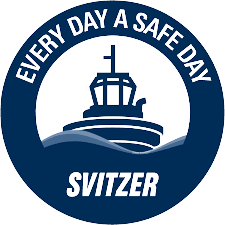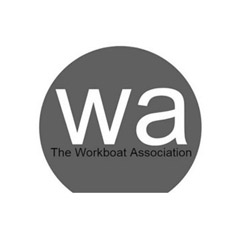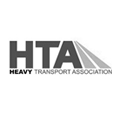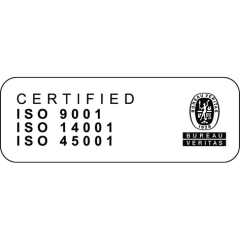
3rd April 2025
A Guide to Abnormal Loads Transport and the Specialist Equipment Required
Transporting oversized and heavy loads involves far more than simply sourcing a larger vehicle. It requires a coordinated approach that includes route planning, regulatory compliance, permits, and specialised support. This guide provides a clear, practical overview of what’s involved in moving abnormal loads across the UK. In this guide we’ll cover everything from legal requirements to the specialist equipment that makes it all possible.
1. What is an Abnormal Load?
If you’ve ever sat behind a slow-moving lorry with flashing beacons and a “Wide Load” sign, you’ve seen an abnormal load in action. These are the heavyweights of the logistics world – too long, too wide, or too heavy to move under regular road rules.
In the UK, an abnormal load typically means anything over 44 tonnes, wider than 2.9 metres, or longer than 18.65 metres. But it’s not just about size. Many of these items, like aircraft parts, wind turbine blades, or large pieces of machinery – can’t be split into smaller sections without risking damage or running up huge costs.
While these aren’t the kind of moves you see every day, they’re essential to keeping infrastructure projects and industrial operations on track. Because of their scale, abnormal loads need to be transported with strict attention to safety and regulation.
Many of these items can’t be dismantled easily – or at all – without damaging them or increasing costs significantly. Therefore, to manage this type of haulage safely and efficiently, a clear set of regulations has been developed in the UK to guide every stage of the journey, from planning to execution.
2. The Regulatory Framework for Abnormal Loads
Here in the UK, abnormal load movements are overseen by specific legislation that ensures both safety and infrastructure protection. Two key regulations apply:
- Construction & Use (C&U) Regulations 1986 – This sets the baseline for vehicle size and weight limits on public roads.
- Special Types General Order (STGO) 2003 – This legislation provides exemptions, allowing certain abnormal loads to travel legally under controlled conditions.
If a load exceeds STGO thresholds, for example, in cases where a load might be exceptionally heavy, long, or wide – a Special Order must be requested from National Highways. This means completing the BE16 form and can require up to 10 weeks’ notice.

3. Notification and Permitting Process
Hauliers must inform the UK authorities in advance if they want to move an abnormal load. That includes the local police, and highway and bridge authorities that may be impacted by the changes.
To efficiently handle this process, hauliers generally use the ESDAL (Electronic Service Delivery for Abnormal Loads system) or Abhaulier. It also empowers them to plan routes, issue the needful notifications and trace approvals – all from a single window. The amount of notice required depends on the weight and size of the load:
- Up to 80,000kg: A minimum of 2 clear working days notice and an indemnity to all road and bridge authorities.
- 80,000–150,000kg: 2 clear working days’ notice to police and 5 clear working days’ to roads and bridge authorities.
- Over 150,000kg: Special Order shall be given to all parties with notice within 5 working days.
For loads greater than 5.0 metres wide or 30.0 metres long, additional forms may be required. For example:
These measures contribute to ensuring that abnormal loads are adequately assessed and managed, and that the risks to road users and the road infrastructure are controlled.
4. STGO Vehicle Categories
STGO categorises abnormal loads on the basis of their weight:
- Category 1: Up to 50,000kg, 5-6 axles, 60mph speed limit on motorways, 50mph on dual carriage ways and 40mph on other roads. .
- Category 2: Including up to 80,000kg, minimum 6 axles, max axle load of 12,500kg. 40mph speed limit on motorways, 35 mph on dual carriageways and 30mph on other roads.
- Category 3: Up to 150,000kg, minimum 6 axles, with a maximum axle load of 16,500kg, 40mph speed limit on motorways, 35 mph on dual carriageways and 30 mph on other roads.
Each vehicle must display the relevant STGO plate.
5. Specialist Equipment Used
Specially made trailers for moving overweight loads:
- Low loaders: Featuring low decks to increase the vertical clearance as well as stability.
- Extendable trailers: Best for long loads, such as wind turbine blades or steel beams.
- Modular trailers (SPMTs): for super-heavy transport, these consist of multi-axles with hydraulic suspension and steering .
Heavy-duty tractor units are essential to pull these trailers. These trucks have been designed and plated for STGO movements. Each truck and trailer must be appropriately configured for the load and route.
At Williams Shipping’s Southampton site, we also offer heavy lifting facilities, open storage, and warehousing space for consolidating and assembling large or heavy cargo before transport.
6. Safety Measures and Supporting Equipment
Escort Vehicles: Escort vehicles or attendants are required on loads over 3.5m wide and often make a big difference – especially for wide or long loads. Escort vehicles, or pilot cars, help keep the transport on track, manage traffic, and alert other road users. In some cases, such as extremely large moves, the police might step in to provide an official escort. Drivers need proper training and equipment like two-way radios and high-vis clothing.
Warning Signs and Lights:
- Clearly displayed STGO category plates on the truck
- “Wide Load” or “Abnormal Load” signage on the escort van.
- Marker boards to show any overhangs
- Flashing amber beacons for visibility, especially in poor light or at night
Load Securing: Securing the load properly is non-negotiable. It can involve chains and binders, ratchet straps, and friction mats. For sea freight, the rules can get even stricter as different shipping lines often have specific requirements. Williams Shipping has plenty of experience navigating these and ensuring cargo stays secure from point A to B.
Route Surveys and Planning: Before any wheels turn, a detailed route check is essential. That means looking out for low bridges, tight bends, and any roadworks that might cause a problem, we work closely with local authorities when necessary.
Risk Assessments: There’s a lot that can go wrong with a move like this, so it’s important to think ahead. Risk assessments cover the full journey from loading, the drive itself, and unloading. From bad weather to awkward road layouts, identifying risks early gives us a better chance of managing them well.

7. Best Practices in Abnormal Load Transport
Williams Shipping emphasises a comprehensive approach to abnormal load logistics:
- Thorough route planning using specialised software
- Compliance with STGO and other permitting regulations
- Use of specialist trailers and lifting equipment
- Risk-focused project planning
- Skilled logistics personnel handling every aspect of the job
- Effective stakeholder communication
- Detailed contingency planning
- Ongoing training and certification for drivers and crew
8. Contact Williams Shipping for Expert Abnormal Load Services
Transporting abnormal loads requires experience, precision, and the right equipment. That’s exactly what Williams Shipping delivers. Our dedicated abnormal load team offers:
- A modern fleet plated up to STGO Category 3
- Specialist trailers including extendible and low loaders
- Heavy lifting and warehousing at our Southampton site
- Highly trained, certified drivers and logistics experts
- Tailored cargo securing for sea and land transport
For more on our capabilities, visit our Abnormal Load Transport Services, learn about Securing Abnormal Loads for Shipping, or read about Best Practices in Abnormal Load Transportation.
Need help moving an abnormal load? Get in touch with the expert team at Williams Shipping to discuss your project and receive tailored logistics solutions.





















